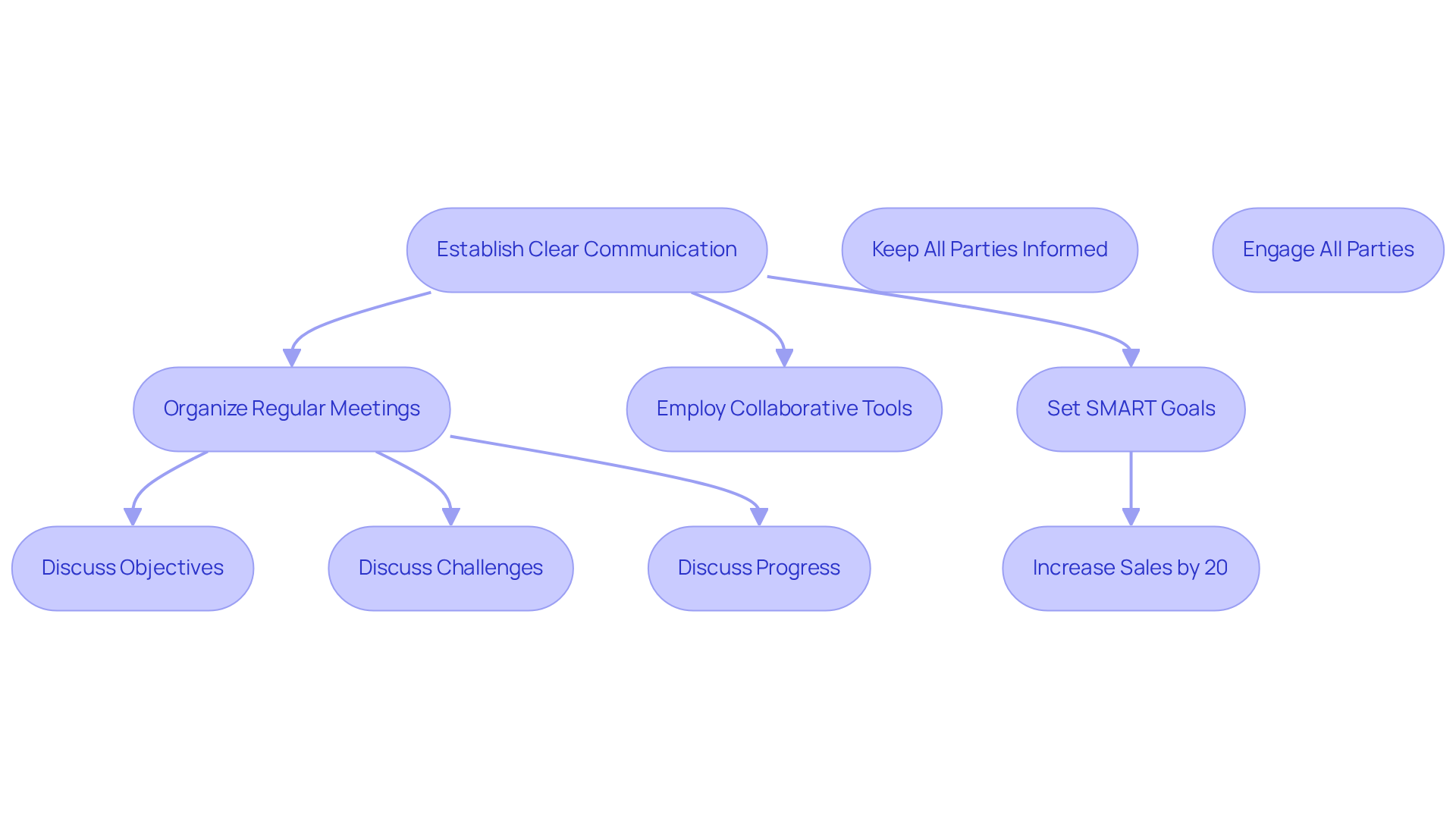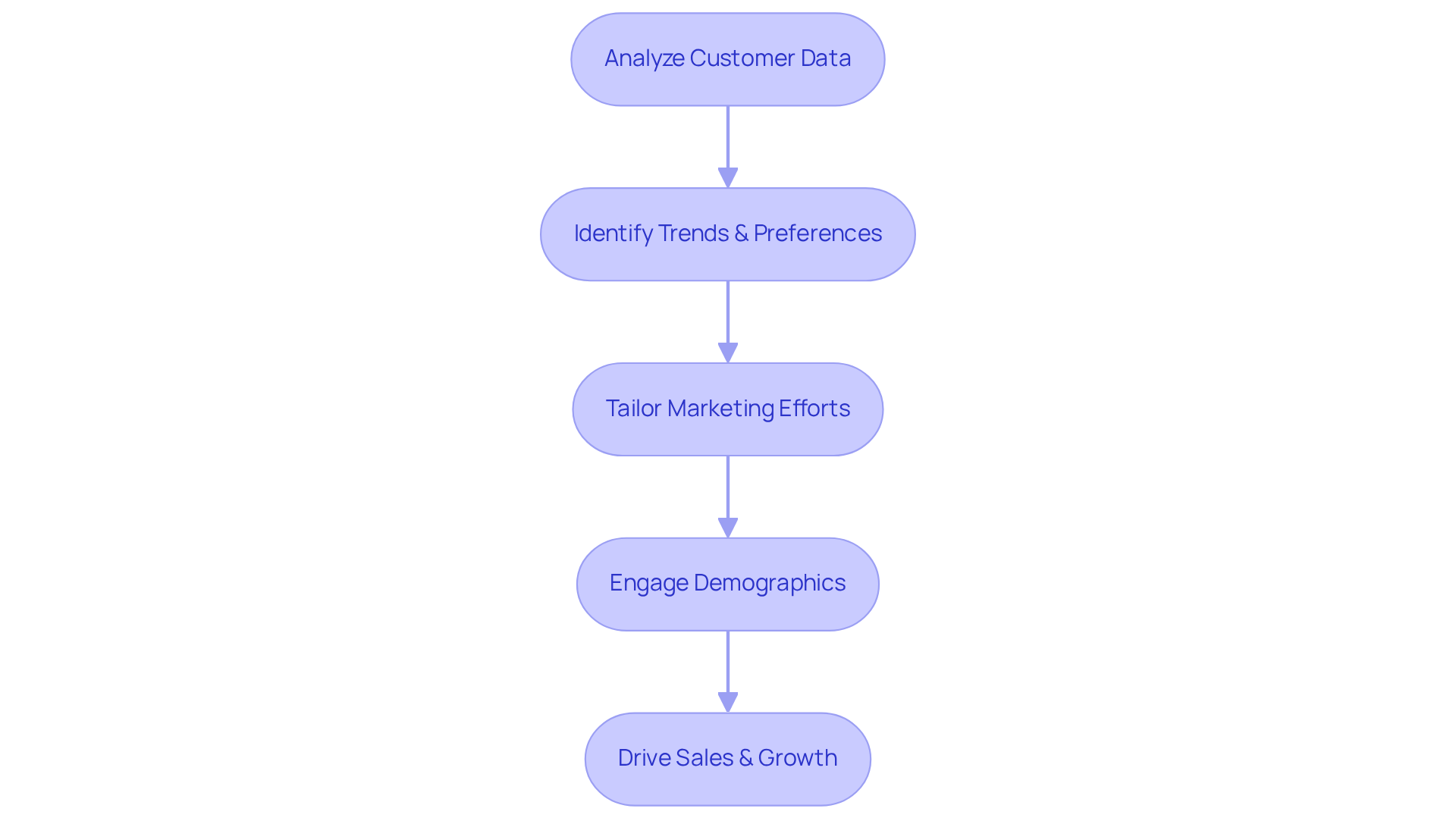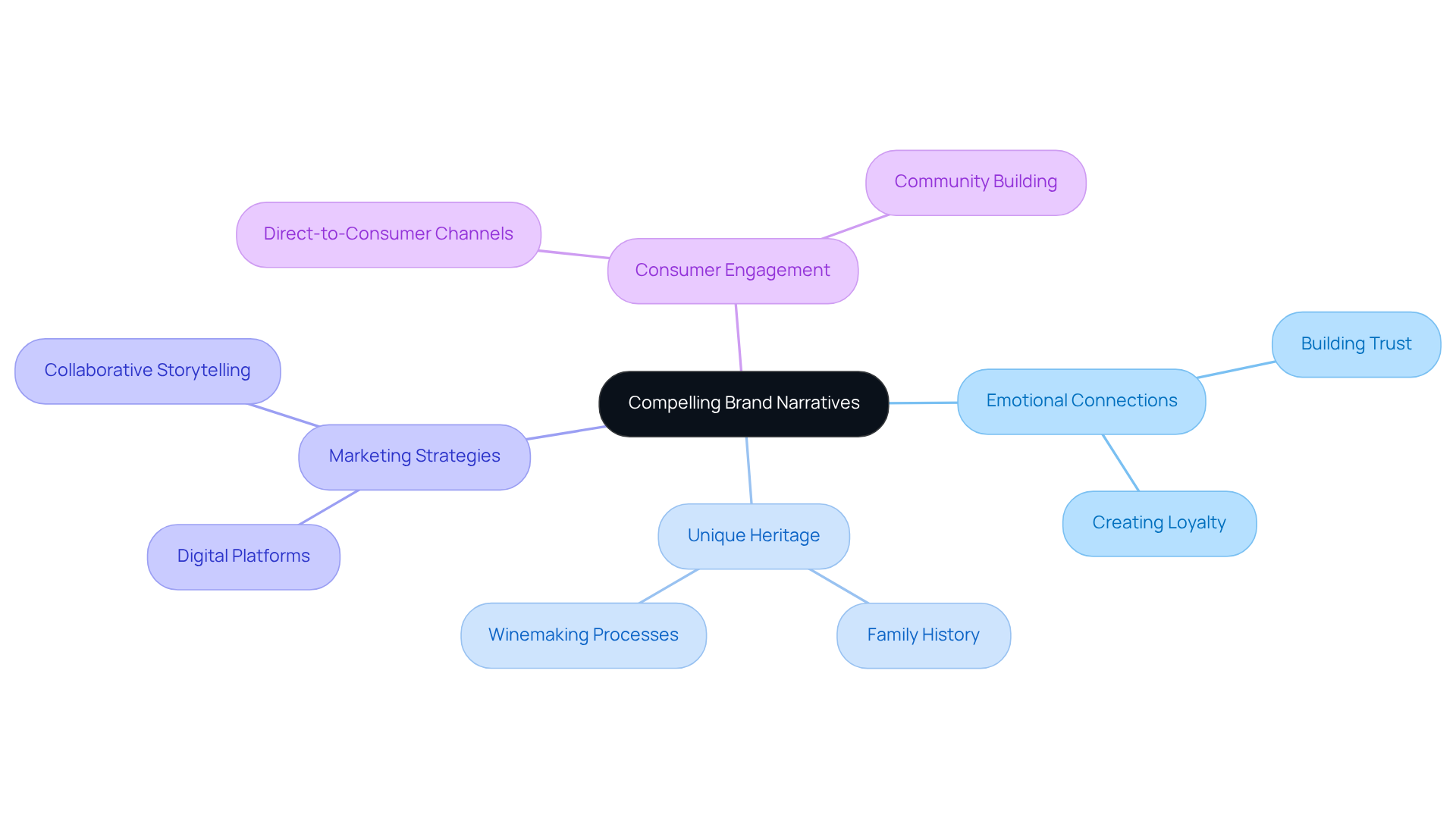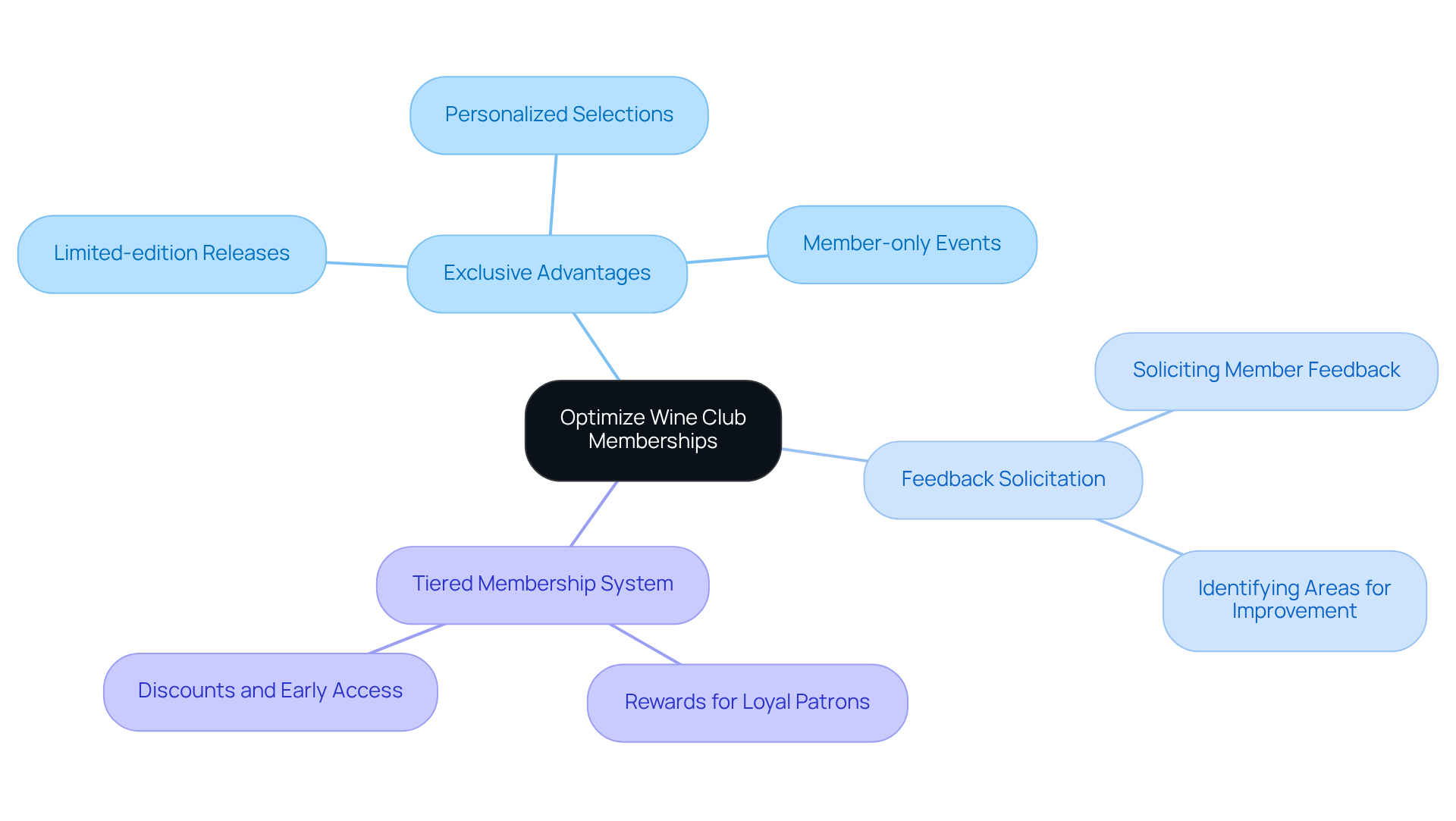Overview
This article presents four essential strategies for collaborating effectively with wine partners. It underscores the critical role of:
- Clear communication
- Data-driven marketing
- Compelling brand narratives
- The optimization of wine club memberships
Each strategy is backed by practical examples and insights, illustrating how these approaches can significantly enhance partnerships, drive consumer engagement, and ultimately foster growth within the wine industry. By implementing these strategies, stakeholders can navigate the complexities of the market with confidence and achieve sustainable success.
Introduction
In the dynamic world of wine, effective collaboration with partners stands as a pivotal element for unlocking growth and success. By establishing clear communication and shared objectives, vineyards can transform their partnerships into powerful alliances that drive results. However, as the industry evolves, the question arises: how can wine producers leverage data-driven insights and compelling narratives to engage consumers and enhance customer loyalty? This article delves into four strategic approaches designed to elevate collaboration with wine partners, ensuring that each partnership is not merely functional but flourishing.
Establish Clear Communication and Shared Goals
To foster effective cooperation with partners, establishing clear communication channels and shared objectives from the outset is essential. Begin by organizing regular meetings to discuss objectives, challenges, and progress. Employ collaborative tools such as project management software to keep all parties informed and engaged. Setting SMART (Specific, Measurable, Achievable, Relevant, Time-bound) goals ensures that all partners are aligned and working toward common outcomes.
For instance, a vineyard can work as wine partners with a nearby eatery to set an objective of increasing beverage sales by 20% over the upcoming quarter, with frequent evaluations to assess progress and adjust plans as necessary. This strategy not only enhances accountability but also strengthens the partnership by cultivating a sense of shared purpose.
Effective communication methods have been shown to significantly enhance business collaborations, fostering the trust and teamwork essential for success in the competitive beverage sector. Moreover, leveraging Enocap's demand creation strategies and customer loyalty initiatives can further solidify these collaborations.
With 27% of new wine club registrations originating from digital channels, implementing is vital for achieving common objectives and driving growth for family-owned vineyards.
Are you prepared to transform your vineyard's growth? Schedule a complimentary 30-minute growth audit with Enocap to uncover tailored opportunities for your establishment.

Leverage Data-Driven Insights for Strategic Marketing
Utilizing data-driven insights is essential for crafting strategic marketing initiatives that resonate with consumers and generate predictable direct-to-consumer (DTC) revenue. Wineries must analyze customer data to identify buying trends, preferences, and demographics, which can inform and promotional strategies.
For instance, if data reveals that a specific wine varietal is popular among a particular age group, producers can tailor their marketing efforts to engage that demographic through social media campaigns or events, transforming casual purchasers into loyal club members.
Moreover, collaborating with wine partners to share data can enhance insights and lead to more effective joint marketing strategies. By leveraging analytics in conjunction with established DTC strategies, businesses within the wine industry can make informed decisions that drive sales, strengthen their wine partners, and unlock growth opportunities, all while considering strategic capital planning for future investments.

Craft Compelling Brand Narratives to Engage Consumers
Creating captivating brand stories is essential for vineyards aiming to connect with consumers and stand out in a competitive market. A well-crafted narrative not only evokes emotions but also forges lasting connections with customers. Wineries must emphasize their , winemaking processes, and the passionate individuals behind the brand. For example, a family-operated vineyard can share its rich history and the dedication that fuels its winemaking, crafting a narrative that resonates with consumers who value authenticity.
Enocap's transformative direct-to-consumer strategies, which include strategic capital planning, empower vineyards to establish sustainable channels that promote consistent growth. Through effective storytelling techniques, casual purchasers can be converted into devoted club members. Collaborating with wine partners to co-develop stories can further enhance reach and impact, enabling vineyards to engage with new audiences.
By integrating storytelling into their marketing strategies, wineries can cultivate deeper connections with consumers, ultimately driving loyalty and boosting sales. This approach not only increases brand visibility but also nurtures a sense of community among beverage enthusiasts, reinforcing the emotional ties that contribute to long-term customer loyalty.
Moreover, as the number of online beverage buyers has surged from 1.5 million to 4.1 million, with an average e-commerce growth of 191% for Enocap's clients in 2020, it is clear that effective storytelling can significantly influence sales and engagement. Vineyards should also consider leveraging digital platforms, where 27% of new club signups originate, to enhance their storytelling initiatives.

Optimize Wine Club Memberships for Enhanced Customer Retention
To enhance client retention, vineyards must focus on refining their wine partners through innovative . This approach should include exclusive advantages such as:
- Limited-edition releases
- Personalized selections
- Member-only events that convey the establishment's unique narrative
By consistently soliciting feedback from members, vineyards can identify areas for improvement and ensure that offerings align with user preferences. For example, a vineyard could implement a tiered membership system that rewards loyal patrons with additional benefits, such as discounts or early access to new products. By continuously enhancing the wine club experience and strategically planning for growth, wineries can cultivate loyalty among wine partners and encourage members to remain engaged with the brand.

Conclusion
Establishing effective collaboration with wine partners is essential for success, hinging on clear communication and shared objectives. By prioritizing these elements, vineyards can foster stronger partnerships that drive results. The outlined strategies underscore the necessity of:
- Setting measurable goals
- Leveraging data-driven insights
- Crafting compelling brand narratives
- Optimizing wine club memberships to enhance customer retention
Each of these components plays a crucial role in creating a cohesive approach that benefits all parties involved.
Regular communication and collaborative tools align partners toward common objectives, enhancing accountability and trust. Additionally, utilizing analytics to inform marketing strategies allows wineries to engage consumers more effectively, transforming casual buyers into loyal supporters. Crafting authentic brand stories not only differentiates wineries in a competitive landscape but also builds emotional connections with consumers, fostering long-term loyalty.
In a rapidly evolving market, the significance of these strategies cannot be overstated. Embracing effective collaboration and innovative marketing approaches empowers vineyards to thrive. By actively engaging with wine partners and consumers alike, businesses can unlock new growth opportunities and solidify their presence in the industry. The call to action is clear: prioritize collaboration and storytelling to enhance brand visibility and customer loyalty, ultimately driving sustainable success in the wine market.
Frequently Asked Questions
Why is clear communication important in partnerships?
Clear communication is essential in partnerships as it fosters effective cooperation, builds trust, and enhances teamwork, which are crucial for success in a competitive environment.
What strategies can be used to establish shared goals among partners?
Establishing shared goals can be achieved by organizing regular meetings to discuss objectives, challenges, and progress, as well as setting SMART (Specific, Measurable, Achievable, Relevant, Time-bound) goals to ensure alignment.
Can you provide an example of setting shared objectives in a partnership?
An example is a vineyard partnering with a nearby eatery to set an objective of increasing beverage sales by 20% over the upcoming quarter, with regular evaluations to assess progress and adjust plans as necessary.
How can project management tools assist in partnerships?
Project management tools help keep all parties informed and engaged, facilitating communication and collaboration among partners.
What role do demand creation strategies play in partnerships within the beverage sector?
Demand creation strategies, such as those offered by Enocap, can solidify collaborations by enhancing customer loyalty and driving growth, which is particularly important for family-owned vineyards.
What percentage of new wine club registrations come from digital channels?
27% of new wine club registrations originate from digital channels, highlighting the importance of implementing direct-to-consumer strategies.
How can vineyards seek assistance in achieving growth?
Vineyards can schedule a complimentary 30-minute growth audit with Enocap to uncover tailored opportunities for their establishment.




